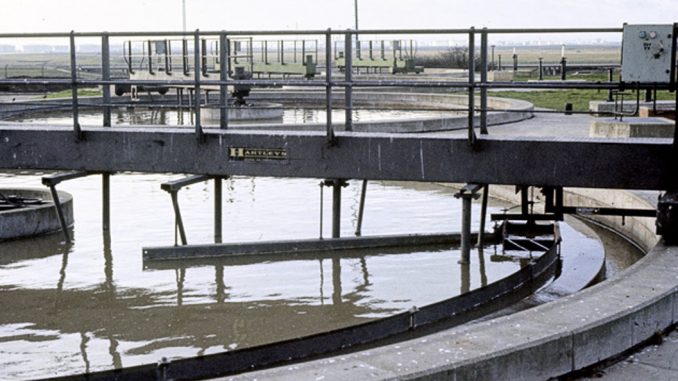
The power of poo could soon be heating homes in London with Thames Water set to use sewage from a treatment plant in Kingston upon Thames to provide energy for a district heating system.
As part of a regeneration scheme in the borough, 2,000 homes are to be constructed on the Cambridge Road estate. If Thames Water’s plan is successful, these new builds will be warmed via treated wastewater.
Normally, wastewater works discharge the clean, warm water left after treatment back into local river systems as effluent. In Kingston, Thames instead want to send the effluent to a new energy centre where it will help heat water to be pumped into people’s homes through the district heating system.
Heat pumps will boost the temperature of the effluent higher before exchangers transfer the heat from the wastewater to a separate system of water pipes used to feed the district heating.
It is estimated that using sewage power to heat the new homes could save up to 105,000 tonnes of carbon dioxide emissions over 30 years. That is the equivalent of driving a car 15,000 times around the world.
Should the scheme prove successful, then Thames has plans to expand its use across Kingston. Public and commercial buildings could be connected to the energy centre so that they too have their heating powered by poo.
District heating systems are used across Europe as a more efficient way of delivering energy. Rather than every house and property being responsible for generating its own heat, one source creates hot water which is then run into numerous properties through a series of pipes.
In Copenhagen, 89 percent of the city’s heating needs are supplied through district heating. As climate change becomes an ever more important issues, district heating power sources are being converted from traditional fossil fuels to renewables.
By connecting district heating systems to a zero-carbon source, Denmark is on track to meet its commitment to fossil-free heating and electricity by 2035.
District heating is less found in the United Kingdom. Some networks were installed by local councils into properties which they owned during the 1960s and 1970s and as these now begin to reach the end of their lifespan, district heating pipe repair is becoming more commonplace.
The reason that the UK largely shunned district heating is because of the vast gas reserves discovered in the 1960s. It made sense at the time for Britain to make the most of its supplies by connecting buildings to gas and leaving it to an individual boiler to use that gas to heat water for the property.
Dwindling supplies, climate change and rising energy bills mean that the UK is now beginning to look again at district heating systems as a means of providing cleaner, cheaper energy supplied by a single source to multiple buildings.
In London, district heating systems are being installed to take heat which keeps the Underground at a constant 25°C all year round and pipe it into homes and buildings.
New developments at Canary Wharf and Southbank are also to be powered by district heating. By 2025, London wants to reduce its reliance on the national energy infrastructure by supplying 25 percent of its energy through decentralised sources.
The first district heating system in the UK to harness the power of sewage was installed by Scottish Water in 2015 to provide 95 percent of the heat used by Borders College in Galashiels.
With the government set to ban gas boilers in new housing developments from 2025, the Thames Water sewage scheme could provide a blueprint for powering district heating systems which will become more prominent as a result.

Leave a Reply